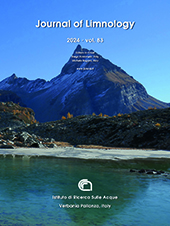How the catchment-river-lake continuum shapes the downstream water quality
All claims expressed in this article are solely those of the authors and do not necessarily represent those of their affiliated organizations, or those of the publisher, the editors and the reviewers. Any product that may be evaluated in this article or claim that may be made by its manufacturer is not guaranteed or endorsed by the publisher.
Authors
Lakes play a crucial role in the nutrient cycling of Earth, despite covering only a small fraction of the planet’s surface. Their interactions with their surrounding catchment areas significantly impact ecosystems and regulatory services. The connection between a lake and its catchment, especially the drainage ratio (catchment area to lake surface area), shapes the characteristics of lakes and their response to catchment processes. Within the catchment area, geological, land cover, and land use factors influence the composition of stream water that flows into the lake. These factors play a role in transporting various substances, both organic and inorganic, to the streams. Lakes act as dynamic filters, altering the chemical composition of water that flows through them. This study aims to investigate how a large, shallow lake impacts the quality of the river water as it passes through. It builds on an analysis of nutrient (carbon, nitrogen, phosphorus, silicon) fluxes into Lake Võrtsjärv, using six years of monthly monitoring data from five main inflows and the outflow. The research explores how catchment characteristics and hydrology affect nutrient concentrations and loadings into the lake, as well as the retention or release of substances by the lake. Findings reveal that catchment characteristics, such as land use and forest cover, significantly influence water quality parameters. Different inflows showed variations in water quality, and annual variations were observed, largely correlated with precipitation and discharge. Võrtsjärv plays a critical role in retaining or releasing nutrients, with varying impacts depending on the water budget of the lake. In years with a positive water balance, the lake retains all nutrients, whereas in dry years only inflowing N and P loads exceed their outflow. Overall, this study underscores the importance of lakes as integral components of catchment ecosystems, shedding light on their complex interactions with the environment and the implications for water quality. It emphasizes the need for careful consideration of land use and hydrological factors in managing and preserving these vital aquatic systems.
Edited by
Diego Copetti, CNR-IRSA Water Research Institute, Brugherio, ItalySupporting Agencies
Estonian Research Council grants PRG709 and PRG1167, European Union’s Horizon 2020 research and innovation programme under grant agreement No 951963How to Cite

This work is licensed under a Creative Commons Attribution-NonCommercial 4.0 International License.






